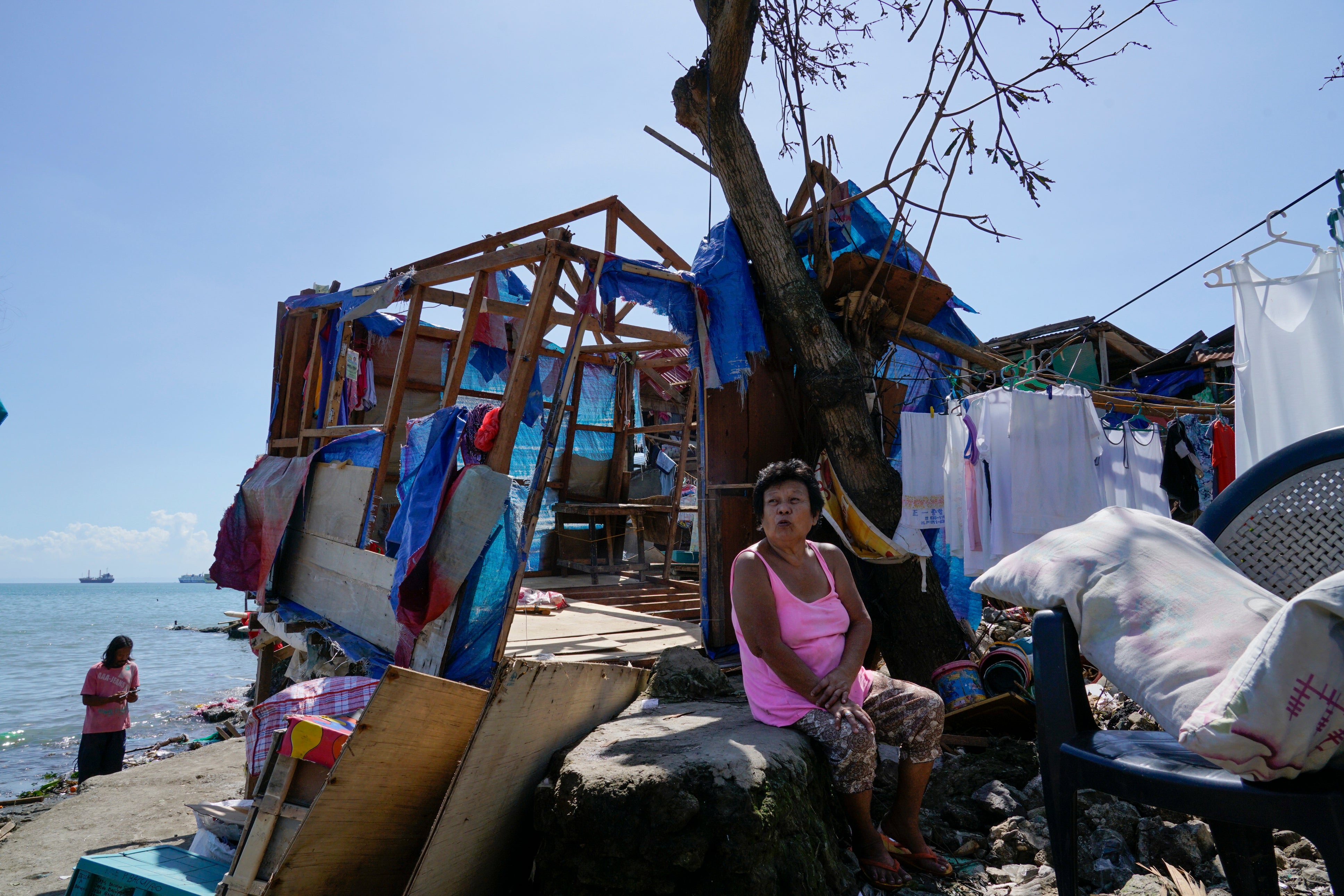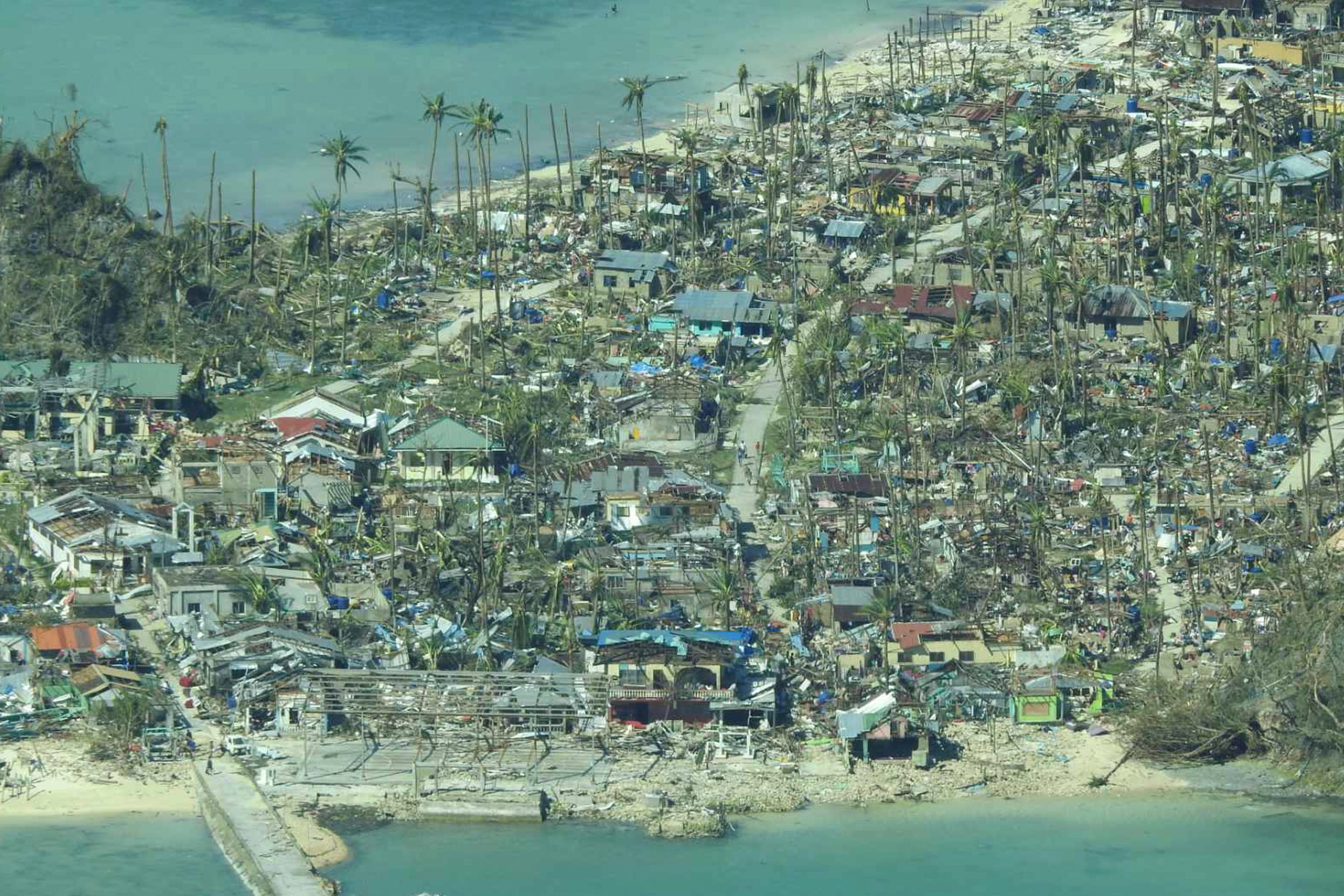Philippines villagers dying of dehydration amid a shortage of clean water following Typhoon Rai, reports say
Lack of clean water in the island nation is leading to dehydration deaths
Your support helps us to tell the story
From reproductive rights to climate change to Big Tech, The Independent is on the ground when the story is developing. Whether it's investigating the financials of Elon Musk's pro-Trump PAC or producing our latest documentary, 'The A Word', which shines a light on the American women fighting for reproductive rights, we know how important it is to parse out the facts from the messaging.
At such a critical moment in US history, we need reporters on the ground. Your donation allows us to keep sending journalists to speak to both sides of the story.
The Independent is trusted by Americans across the entire political spectrum. And unlike many other quality news outlets, we choose not to lock Americans out of our reporting and analysis with paywalls. We believe quality journalism should be available to everyone, paid for by those who can afford it.
Your support makes all the difference.At least two people in typhoon-ravaged Philippines died due to dehydration on Monday because of the lack of clean drinking water.
According to local media, the deaths took place in the Dapa village of Siargao Island, days after typhoon Rai made landfall.
Local broadcaster RMN Tacloban quoted health officials as saying that there was no clean water supply in the area and the village needed a generator and fuel to run the water refilling stations.
Residents that bore the brunt of Rai pleaded for food, water, and shelter as damaged roads and severed communication lines hampered relief efforts.
Rai, the strongest typhoon to hit the archipelago this year, killed nearly 400 people and displaced over 630,000, according to the UN Office for the Coordination of Humanitarian Affairs. The storm, known locally as Odette, slammed into the eastern island of Siargao with winds up to 210 km/hr, leaving a trail of destruction on its path.
"Our food supply is running low. Maybe, in a few days, we will totally run out," Fely Pedrablanca, mayor of Tubajon town on Dinagat Island said.

The coast guard has deployed vessels to help in relief work in cut off areas, while the Philippine Red Cross (PRC) has offered to ferry people to safety, including stranded tourists.
"We're fighting a tremendous disaster. It's Haiyan all over again," PRC Chairman Richard Gordon told Reuters, referring to the cyclone that killed 6,300 people in 2013.
Meanwhile, president Rodrigo Duterte on Monday ordered state agencies to restore power and promised 10bn pesos ($20m) for recovery efforts.
The governor of the central Bohol province, where at least 100 have died in the storm's aftermath, asked the federal government for money and food aid for battered citizens.
"If you would not send money for food, you should send soldiers and police, because if not, lootings will break out here," governor Arthur Yap said after thanking president Duterte for visiting Bohol over the weekend.
The federal administration’s social welfare department has vowed to help the homeless and displaced locals with 35,000 food packets after the president’s visit.

The Philippines' neighbours Japan and China have come together to help the nation with power generators, camping tents, sleeping pads, food packets and rice.
In the past three decades, the Philippines has recorded at least 205 tropical cyclones, the highest of any Asian country, according to EM-DAT, a publicly available database on disasters run by the University of Louvain.

Join our commenting forum
Join thought-provoking conversations, follow other Independent readers and see their replies
Comments